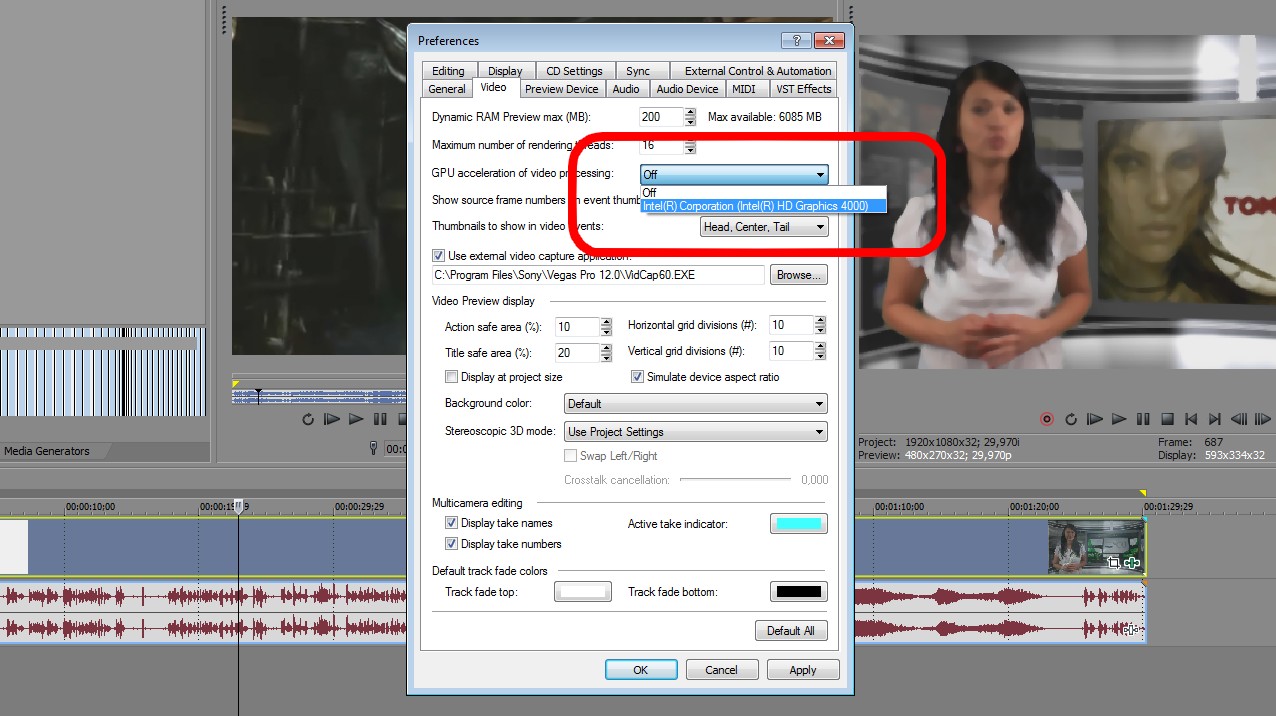

- ADOBE PREMIERE OPENCL BENCHMARK HOW TO
- ADOBE PREMIERE OPENCL BENCHMARK UPDATE
- ADOBE PREMIERE OPENCL BENCHMARK PRO
- ADOBE PREMIERE OPENCL BENCHMARK SOFTWARE
ADOBE PREMIERE OPENCL BENCHMARK SOFTWARE
Nvidia claims a basic 4K transcode should drop to 4 minutes and 45 seconds using an RTX 2060, compared to 11 minutes and 43 seconds using software encoding on an Intel Core i9-9750H CPU.ĪMD GPUs will also be supported in this update, as Adobe has been beta testing the changes with both AMD and Nvidia graphics cards recently. This is also accelerated using Nvidia’s CUDA cores.īoth Adobe and Nvidia are promising big improvements to encode times with this new support.

ADOBE PREMIERE OPENCL BENCHMARK PRO
“With new support for NVIDIA GPUs on Windows, exports are hardware accelerated leveraging the power of the GPU to make Premiere Pro more powerful and keep video creators productive and nimble.” Nvidia and Adobe promise big improvements.Īdobe’s latest updates also include support for Apple’s ProRes RAW format in both Premiere Pro and After Effects, meaning video editors using Windows can now import ProRes RAW files without having to transcode them. “These improvements are the result of years of collaboration between Nvidia and Adobe to deliver high-quality applications and tools to creators,” says Manish Kulkarni, senior engineering manager at Adobe. It will improve export times for H.264 or H.265 / HEVC codecs. Now, Adobe and AMD have announced that they’ve brought OpenCL.
ADOBE PREMIERE OPENCL BENCHMARK UPDATE
Premiere Pro has long supported Nvidia’s CUDA cores for accelerating video effects and even improving export times, but this new update optimizes the app to use the separate hardware encoder on Nvidia’s GPUs. Since last year, Adobe Premiere Pro has supported OpenCL acceleration on Mac computers. The changes also apply to Adobe’s Media Encoder, After Effects, and Audition apps. The 14.2 update includes GPU-accelerated encoding using Nvidia’s hardware encoder for the company’s Quadro and GeForce graphics cards, with the promise that video editors will be able to export high-resolution videos up to 5 times faster than by just using the CPU. This also suggests to me that NVIDIA will need to ensure excellent OpenCL support in its GPU cards, as well as continuing to evolve CUDA, since Creative Suite is a key product for designers using the workstations which form a substantial part of the market for high-end GPUs.Adobe is releasing a new update to Premiere Pro this week that includes hardware acceleration for Nvidia and AMD GPUs. Adobe Premiere, powerful graphic design software like Adobe Illustrator. It seems to me that this amounts to a shift by Adobe from CUDA to OpenCL, which is a good thing for users of non-NVIDIA GPUs. In addition, the GPU delivers performance comparable to a high-end GPU in. It does not use the proprietary CUDA framework from nVidia. MGE is new to Photoshop CS6, and uses both the OpenGL and OpenCL frameworks. The new MGE delivers unprecedented responsiveness for a fluid feel as you work. In Photoshop CS6, this new engine delivers near-instant results when editing with key tools such as Liquify, Warp, Lighting Effects and the Oil Paint filter. The Mercury Graphics Engine (MGE) represents features that use video card, or GPU, acceleration. The Mercury Graphics Engine uses the OpenCL framework, which is not specific to any one GPU vendor, rather than CUDA:

ADOBE PREMIERE OPENCL BENCHMARK HOW TO
PhotoShop CS6 also uses the GPU to accelerate processing, using the new Mercury Graphics Engine. How to enable GPU Acceleration (OpenCL) in Premiere Pro AMD Graphics Card FixIf you are using AMD graphics card just like me, I was able to solve my proble.

New support for the OpenCL-based AMD Radeon HD 6750M and 6770M cards available with certain Apple MacBook Pro computers running OS X Lion (v10.7x), with a minimum of 1GB VRAM, brings GPU-accelerated mobile workflows to Mac users. a bit like comparing apples to burnt oranges 7x faster on Adobe Premiere. The Mercury Playback Engine brings performance gains to all the GPUs supported in Adobe Creative Suite 6 software, but the best performance comes with specific NVIDIA® CUDA™ enabled GPUs, including support for mobile GPUs and NVIDIA Maximus™ dual-GPU configurations. the performance of the M1 Max is similar to that of the highest-end GPU. Premiere Pro CS6 also uses the Mercury Playback Engine, and while CUDA is still recommended there is new support for OpenCL: Just to be clear, this is not just graphics acceleration, but programming the GPU to take advantage of its many processor cores for general-purpose computing. CS 5.5 used the Mercury Playback Engine in Premiere Pro, which takes advantage of NVIDIA’s CUDA library in order to accelerate processing when an NVIDIA GPU is present. Adobe has just announced Creative Suite 6.


 0 kommentar(er)
0 kommentar(er)
